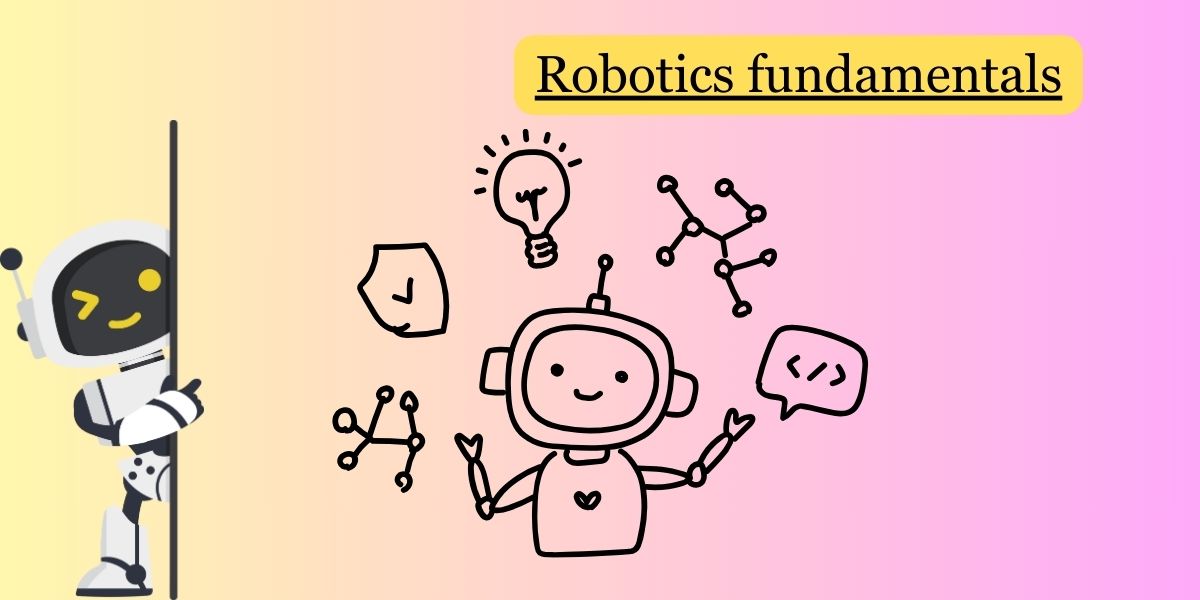Robotics fundamentals encompass a broad range of concepts and principles related to the design, construction, operation, and application of robots. Here are some key elements of robotics fundamentals:
- Definition of a Robot:
- A robot is a programmable machine designed to carry out tasks autonomously or semi-autonomously. It can be controlled by a computer or other external devices.
- Components of a Robot:
- Robots consist of various components, including actuators (motors or servos), sensors (to perceive the environment), a control system (to process information), and an effector (the tool or mechanism for performing tasks).
- Programming:
- Understanding how to program robots is fundamental. Programming languages like C++, Python, or specialized languages such as ROS (Robot Operating System) are commonly used.
- Kinematics and Dynamics:
- Kinematics deals with the study of motion in robots, focusing on position, velocity, and acceleration. Dynamics involves the study of forces and torques acting on robots during motion.
- Sensors:
- Sensors provide robots with information about their environment. Common sensors include cameras, ultrasonic sensors, infrared sensors, and touch sensors.
- Actuators:
- Actuators are responsible for making the robot move. Electric motors, servos, and pneumatic or hydraulic systems are examples of actuators.
- Control Systems:
- Control systems manage the behavior of the robot based on sensor inputs. PID (Proportional-Integral-Derivative) controllers are widely used in robotics.
- Robotics Programming Environments:
- Understanding how to work in robotics programming environments, such as simulation software (like Gazebo), is important for testing and validating robot designs before physical implementation.
- Robot Operating System (ROS):
- ROS is a flexible framework for writing robot software. It provides tools and libraries for tasks such as hardware abstraction, communication between processes, and package management.
- Robot Design and Configuration:
- Designing a robot involves considerations of mechanical structure, materials, and configuration. This includes understanding kinematic chains, degrees of freedom, and the design trade-offs.
- Computer Vision:
- Computer vision enables robots to interpret and understand visual information from the environment. This is crucial for tasks like object recognition, navigation, and manipulation.
- Robotics Applications:
- Understanding the various applications of robotics in fields such as manufacturing, healthcare, agriculture, space exploration, and more is fundamental.
- Ethical and Social Implications:
- Consideration of ethical and social implications, including the impact of robotics on society, job displacement, privacy concerns, and ethical use of autonomous systems.
- Safety Protocols:
- Implementing safety protocols is crucial, especially in industrial and collaborative robot settings, to prevent accidents and ensure the well-being of humans working with or around robots.
- Machine Learning and AI:
- Integration of machine learning and artificial intelligence (AI) technologies to enhance the adaptability and decision-making capabilities of robots.
Understanding these fundamentals provides a solid foundation for individuals interested in entering the field of robotics, whether as hobbyists, students, researchers, or professionals. Robotics is a multidisciplinary field, and proficiency in various areas, including mechanics, electronics, computer science, and control theory, contributes to a well-rounded understanding of robotics fundamentals.


No responses yet